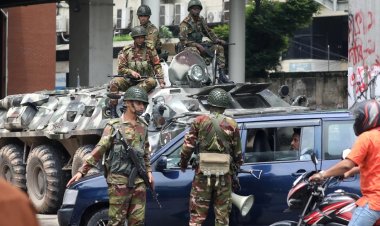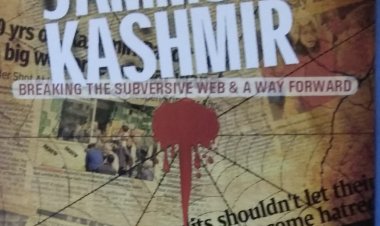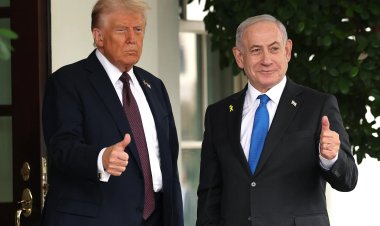South Asia’s Disruptive Terror Financing Network: An Overview

Analysis
By Angana Guha Roy
In a span of 6 months, India witnessed two terrorist attacks in Srinagar and New Delhi, respectively. Intelligence intercepts indicate that Islamabad’s most lethal proxy, Lashkar-e-Taiba (LeT), is now planning coordinated terror attacks in India on January 26, Republic Day.
In light of recent developments, a focused study on terror financing in India’s fight against terrorism has become even more crucial amid the expanding network of Islamic radicalisation in the country, particularly in states such as Kerala, West Bengal, Assam, and Jammu and Kashmir. Following the establishment of Al-Qaida in the Indian Subcontinent (AQIS) in 2014, the NIA has arrested AQIS operatives from Assam, West Bengal, Kerala, and Gujarat.
An important point remains that defeating terrorism does not necessarily defeat the terror financing network, which in turn can revitalise neutralised terror channels.
Dr Amit Kumar, Centre of National Policy, Georgetown University, while reflecting on the issue, pointed out the transnational nature of the terror financing network and that addressing the challenge requires an elaborate monitoring and surveillance mechanism of financial networks, essentially local and international banks, to navigate the flow of funds and fighters across borders. His account on terror finance networking further reflects on the fallacy points of legal methods that fail to implement the legal safety networks effectively against the resilience of established routes of terror financiers.
Factsheets reveal, Sunni radical forces in the gulf reportedly have consistently donated funds in South Asia for operations against the US, Afghanistan, and India. The huge, secretive, and layered hawala network and unregulated charities continue to remain a preferred system to move funds globally for terror financing. On November 8, when Prime Minister Narendra Modi announced to India the demonetisation of high-value currency notes, he specifically referred to the use of Hawala and fake Indian currency notes for terror financing.
A report published by South Asia Terrorism Portal states the National Investigation Agency (NIA) revealed evidence linking The Resistance Front (TRF)—a proxy of the Lashkar-e-Toiba (LeT)—to a hawala network routed through Malaysia and Pakistan, expectedly routed through Srinagar, with suspects raising over INR 9,00,000 for the outfit. As part of its probe, the NIA found that TRF had initially claimed responsibility for the April 22 Pahalgam terror attack in Jammu and Kashmir but later withdrew the claim. NIA reports reveal rampant use of hawala channels for arranging funds for terror groups like al-Qaeda. Recent reports also reveal the use of hawala channels to pay for smuggling weapons into Manipur, Mizoram from Myanmar.
A case study presented by India in the report titled Comprehensive Update on Terrorist Financing Risks, published by the Financial Action Task Force (FATF), sheds light on the concerns surrounding terrorism proliferation within the South Asian region. This report points to the state-owned National Development Complex in Pakistan, which has faced sanctions from multiple jurisdictions due to its involvement in proliferation financing. As a result, Pakistan continues to be regarded as a high-risk jurisdiction for such activities. Furthermore, India’s National Risk Assessment for Money Laundering and Terrorist Financing 2022 underscores the significance of Pakistan’s state sponsorship of terrorism, identifying it as a major source of terrorist financing risk.
Amid reports that Pakistan-based terror groups, including Jaish-e-Mohammad, have been using digital wallets and crypto channels to fund terror operations while masking financial flows, FATF recently cautioned Pakistan that its removal from the greylist in October 2022 does not make it immune to scrutiny over money laundering and terror financing.
Terrorist groups even employ several methods to channel funds through religious and charitable fronts, including mosques. Reports have drawn attention to the fact that the distance between charities and terrorism financing in Pakistan is particularly blurry. The Zakat-funded local NGOs in Pakistan have been found to have links to terror outfits. Hafiz Saeed, one of the founders of a prominent terrorist group (Lashkar-e-Taiba), was wanted by the US State Department for 10 million USD while being head of a charitable foundation in Pakistan. There are several such reported examples. Back in 2018, a mosque in Haryana's Palwal district came under the scanner of the National Investigation Agency or NIA over alleged links with a terror group in funding its construction. The NIA has said its probe indicated that the mosque was built with the help of funds received from Pakistan-based terror group Lashkar-e-Taiba or LeT.
Recent reports also reveal terror financing through trade networks and drug trafficking. A letter written by ITC Ltd, forwarded to all Customs and the Directorate of Revenue Intelligence (DRI), drew attention to widespread smuggling of counterfeit cigarettes via air, sea and land routes, as well as speed post from foreign countries, mainly South-East Asia and the Middle East, to India, helping finance terrorism. Furthermore, with nearly 40% of the world's opiate users residing in South Asia, the region faces significant challenges from the proceeds of illegal drug trafficking being used for terrorism. Terror groups such as the Taliban and Al-Qaeda have systematically exploited the narcotics trade of the ‘ Death Crescent’ to fund their activities across the region, including the porous borders of Jammu and Kashmir. A primary concern for security forces is that money generated from the illicit drug trade, often orchestrated by handlers across the Line of Control (LoC) in Pakistan, is sent back to fund terror outfits in J&K.
Formal funds of international donor organizations have been misused for funding terrorist activities in the region directed against India. A report published by India Today in February 2025 claimed, USAID, a statutory body of the US government, ended up funding the Pakistan-based Falah-e-Insaniat Foundation (FIF), a front for Hafiz Saeed-led Lashkar-e-Taiba (LeT). USAID funded the FIF and LeT, which led to multiple terror attacks in India, despite being banned by the US government. The Falah-e-Insaniat Foundation (FIF) and LeT were involved in the 26/11 attacks in Mumbai, in which 166 people were killed. Six Americans were among the 166 people mercilessly killed by the Pakistani terrorists.
With a surge in fintech adoption and mobile wallets, with global cryptocurrency markets hitting record highs, the terror fundraising tactics are evolving. Hamas and other Palestinian terror organizations have already started leveraging online crowdfunding and cryptocurrencies to fund terror activities.
A report published by Global Network on Extremism and Technology, King’s College London, reveals crowdfunding platforms that are commonly used for legitimate causes, such as GoFundMe, have been exploited for extremist fundraising. Radical groups such as Hayat Tahrir al-Sham, Islamic Relief Worldwide and others have launched campaigns in the name of disaster relief to channel resources covertly. Investigations have recorded lenient Know Your Customer (KYC) regulations and insufficient verification strategies allowing such campaigns to operate undetected. Extremists exploit daily used payment and messaging apps such as Telegram by breaking transfers into micro-transaction sums that stay below the minimum detection threshold, evading suspicion.
The regulatory and enforcement regimes across South Asia are fragmented and uneven in responding to terror funding, with different legal frameworks operating within the territories of different countries. A transboundary collective effort to design regulatory responses through politically neutral coordination might be induced to protect data sensitivities for national security. Being a terror hotspot, platforms modelled after the Indonesian SIPENDAR intelligence-sharing platform, enabling real-time data exchange between law enforcement agencies and financial institutions to counter cryptocurrency-related exploitations, can be explored.
The proximity of cyberspace and terrorism has made terror financing networks flowing across porous borders resilient to counter terror measures, even making it easier for covert mobilization of supporters, sharing tactics, and evasion of authorities across jurisdictions. Hezbollah, for example, receives significant support from Iran’s government and profits from criminal activities like money laundering and drug trafficking.
India has a global commitment to combat terrorism financing through active cooperation with international bodies like the Financial Action Task Force (FATF) and the United Nations, and by strengthening its own anti-terror financing laws, such as the Unlawful Activities (Prevention) Act.
With the evolution of technology, the existing mechanisms to prevent terror financing need an upgrade. A step towards an effective method of navigating terror financing will breach the resilience of the fund and recruitment networks in the region.
Disclaimer: This paper is the author's individual scholastic contribution and does not necessarily reflect the organization's viewpoint.























